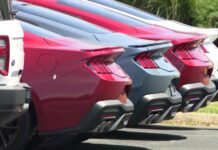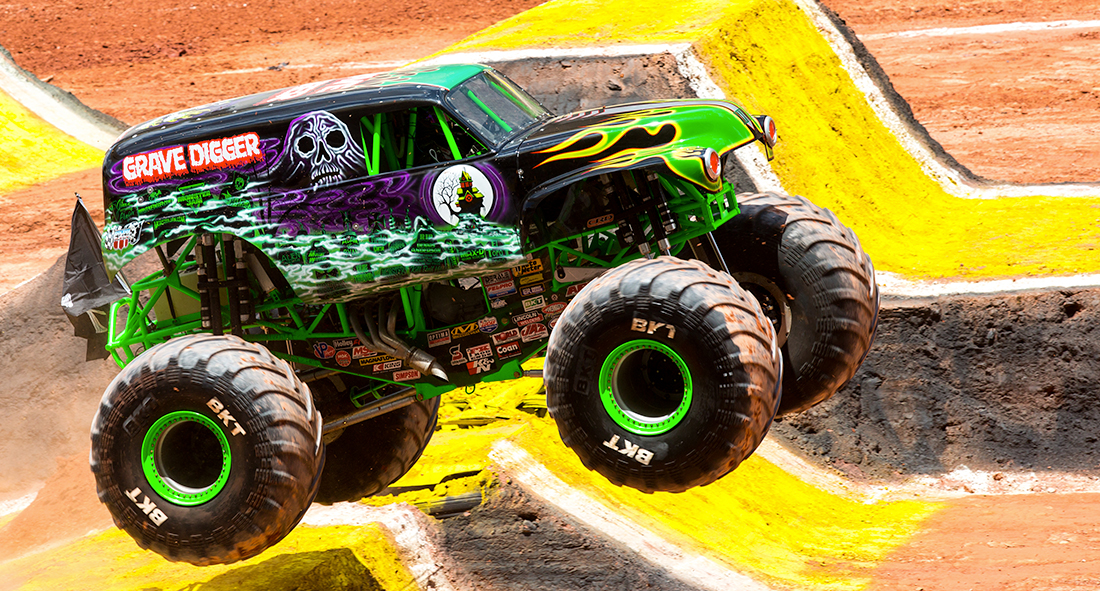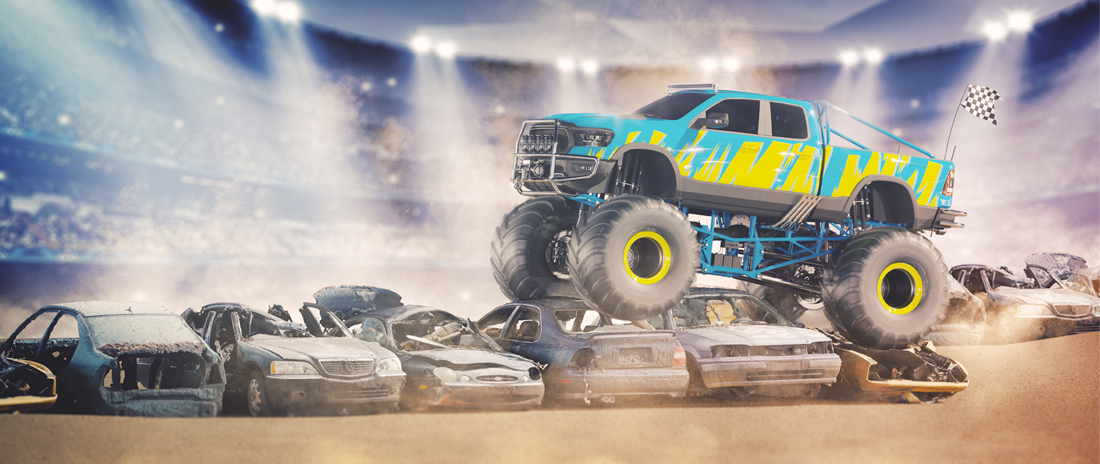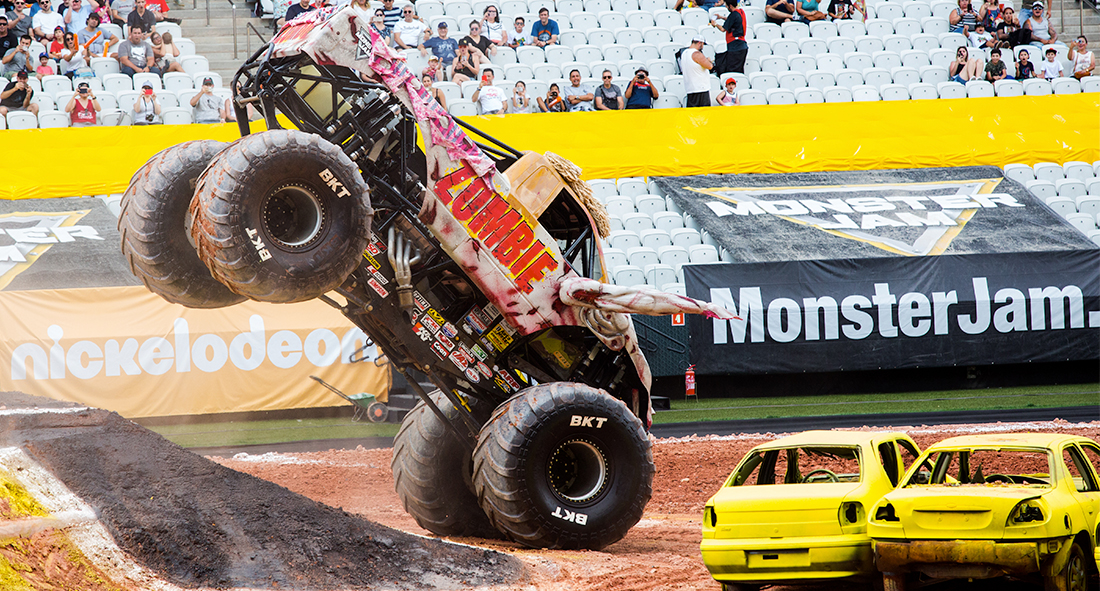Those Wacky Monster Trucks Have Been Filling Stadiums Since the 70s!
The concept of monster trucks began in the 1970s when large four-wheel drive vehicles were modified for off-road racing and display. The first monster truck show was held in 1982, and the sport grew in popularity throughout the 1980s and 1990s. Today, monster truck events feature high-flying stunts, car crushing exhibitions, and races. Many of the trucks have signature designs, names, and personalities, and the sport continues to be a popular form of entertainment for fans around the world.
Bob Chandler is widely credited as the creator of the first monster truck and the first monster truck driver. He created the truck, named “Big Foot,” in 1979 and began driving it in competitions and exhibitions. Chandler is considered a pioneer in the monster truck industry and his legacy continues to influence the sport.
There are many popular monster truck drivers and trucks that are known for their unique designs and high-flying stunts. Some of the most famous monster trucks and drivers include:
- Grave Digger, driven by Dennis Anderson
- Max-D, driven by Tom Meents
- Monster Energy, driven by Coty Saucier
- El Toro Loco, driven by Mark List
- Blue Thunder, driven by Lee O’Donnell
- Zombie, driven by Bari Musawwir
- Megalodon, driven by Carl Van Horn
- Scooby-Doo, driven by Adam Anderson
- earthShaker, driven by Jim Koehler
The Business of Monster Truck Jams
The monster truck show market is a significant industry, with events held all over the world and attracting millions of fans. In the United States, monster truck shows are a staple of motorsports entertainment and are held in large arenas and stadiums, as well as outdoor venues. The sport has a dedicated fan base, and many of the trucks have become household names and cultural icons.
It is difficult to estimate the exact size of the market, as it is influenced by factors such as ticket sales, merchandise sales, and sponsorship deals. However, it is safe to say that monster truck shows generate significant revenue for the teams, drivers, and event promoters. The popularity of the sport continues to grow, and it remains a major player in the world of motorsports entertainment.
How Monster Trucks Are Built
- Choosing a base vehicle: Most monster trucks are built using a heavy-duty pickup truck as the base vehicle. The base vehicle is stripped down to its frame and modified to accommodate the larger tires and suspension required for monster truck competitions.
- Lifting the frame: The frame of the base vehicle is lifted to accommodate the large tires and provide ground clearance. This step often involves adding custom suspension components, such as longer shock absorbers and larger leaf springs.
- Installing large tires: Monster truck tires can be up to 66 inches in diameter and 43 inches wide, and they are mounted on custom wheels. The tires are typically made of durable materials, such as polyurethane or rubber, to withstand the demands of off-road competition.
- Reinforcing the frame: The frame and chassis of the monster truck must be reinforced to handle the stress and weight of the large tires and perform stunts. This step often involves adding roll cages, strengthening the frame, and installing safety equipment, such as fire suppression systems.
- Painting and customizing: Finally, the monster truck is painted and customized to reflect the driver’s personality and style. Many monster trucks have distinctive designs and names, and some even have custom bodywork and lighting.
Big Money for The Superstar Trucks
The amount of money that monster trucks make depends on several factors, such as the popularity of the truck, the experience and success of the driver, and the size and scale of the events they participate in.
Some of the most successful monster truck drivers and teams can earn substantial income through event appearances, sponsorships, and merchandise sales. For example, the top drivers may earn six-figure salaries, while the most popular trucks can generate significant revenue through merchandise sales, advertising, and other forms of promotion.
In addition to the income generated by individual drivers and trucks, monster truck shows and events can also generate significant revenue. Large-scale events, such as Monster Jam and the Monster Truck Nationals, attract thousands of fans and can generate millions of dollars in ticket sales and sponsorship revenue.
It’s worth noting that monster truck driving is a highly competitive sport, and not all drivers and trucks are equally successful. Some drivers may earn relatively modest salaries, while others may struggle to find consistent work and earn less than they would in other forms of motorsports.
Overall, the monster truck industry is a lucrative one, and top drivers and trucks can earn substantial income through their involvement in the sport.
The Danger Involved
There have been a number of accidents and incidents involving monster trucks over the years. Some of these accidents have been minor, while others have been more serious and resulted in injury or death.
A few examples of notable monster truck accidents include:
- In 2007, a monster truck driver was killed during a performance in Australia when his truck rolled over.
- In 2013, a monster truck driver was injured when his truck crashed during a stunt in Pennsylvania.
- In 2019, a monster truck driver was injured when his truck flipped over during a performance in California.
- In 2020, a monster truck driver was killed when his truck crashed during a performance in Texas.
These are just a few examples of the accidents that have occurred in monster truck shows over the years. It is important to note that while monster truck driving can be dangerous, safety measures are in place to minimize the risk of accidents, and the sport continues to evolve and improve to prioritize the safety of drivers and fans.







![[Presentation] Livestream of TMC’s Press Conference](https://www.miamicars.com/wp-content/uploads/2023/02/tmb_corporate-218x150.png)











